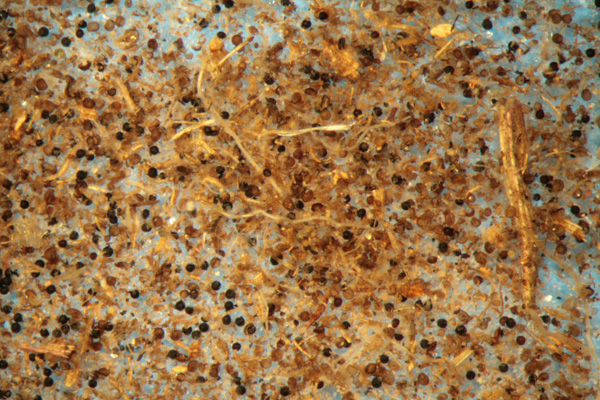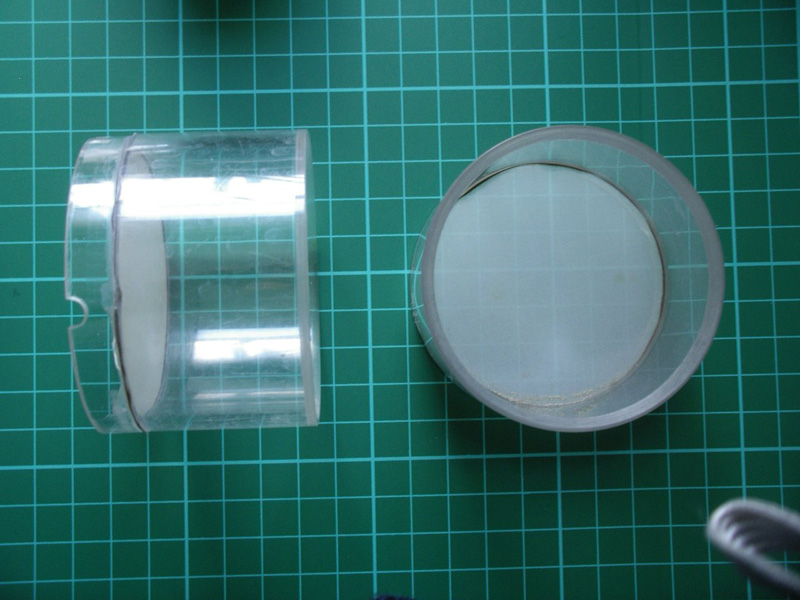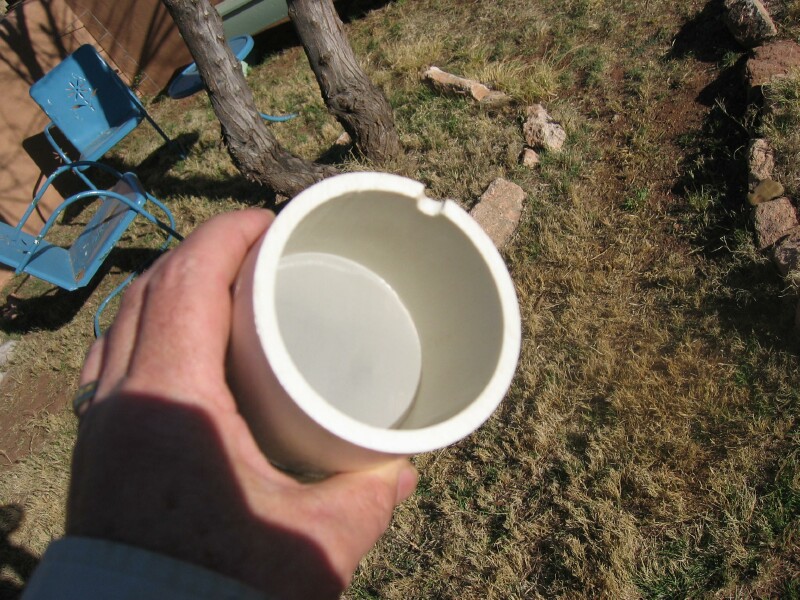I received this from Dr. Walker after sending him a soil sample for pH testing.
I was absolutely amazed with the number of spores in the sample I took for pH. It was only a level teaspoonful, and after I had done the pH, I washed the sample through a sieve and had a look. This got me to thinking, I wonder if these things are producing spores singly in the soil, or are they just from a disintegrating spore mass. It would be interesting to know. I don't know if you want to have a look, but you will need a sieve (something around 50 Ám (micrometre) openings) to do it. If you are interested, I can give you instructions.

Dr. Walker's commercial acrylic sieve on the left, my homemade PVC version on the right.
The membrane is a 60-micron mesh commonly used at breweries for filtering yeasts.
 |
 |
April 12, 2007 - From Dr. Walker
Your sieving sounds good. You probably already have answered the question as you did not find spores even a small distance away from the spot you found the spore masses. I can suggest, however, a way of reducing the amount of soil you have to look through for the spores. If you just take a teaspoonfull of soil and drop into a jar or jug full of water (I use a jamjar, but it must have smooth sides). After letting it soak thoroughly and breaking up any lumps, then give it a vigorous swirl with a teaspoon to get it spinning like a whirlpool. Then let this settle for 10-20 seconds, and decant it through a coarse sieve (a flour sifter is ideal, or as you suggest, a window screen), stopping just before the soil reaches the lip of the container, (IMPORTANT coming up) catch the water in a bucket or similar. Swirl this in water again, allow to settle again, and pour through your fine sieve. This then reduces the amount of soil and increases your chance of seeing the spores that are resting on the sieve. Wash the sieve through with a jet of water, and then you can 'backwash' into a Petri dish or similar (I use a 6-cm dish, and prefer to use the lids as they are shallower, and don't get you so sea-sick watching everything wobble around under the dissecting microscope.
Your collection in the top inch or two is fine. Almost all spores are in the top 5-10 cm (2-4 inches approx).
So, if you want to give it another whirl, I will be interested to hear your results.
Back to Great Balls O' Dirt.
A. sporocarpia in the field.